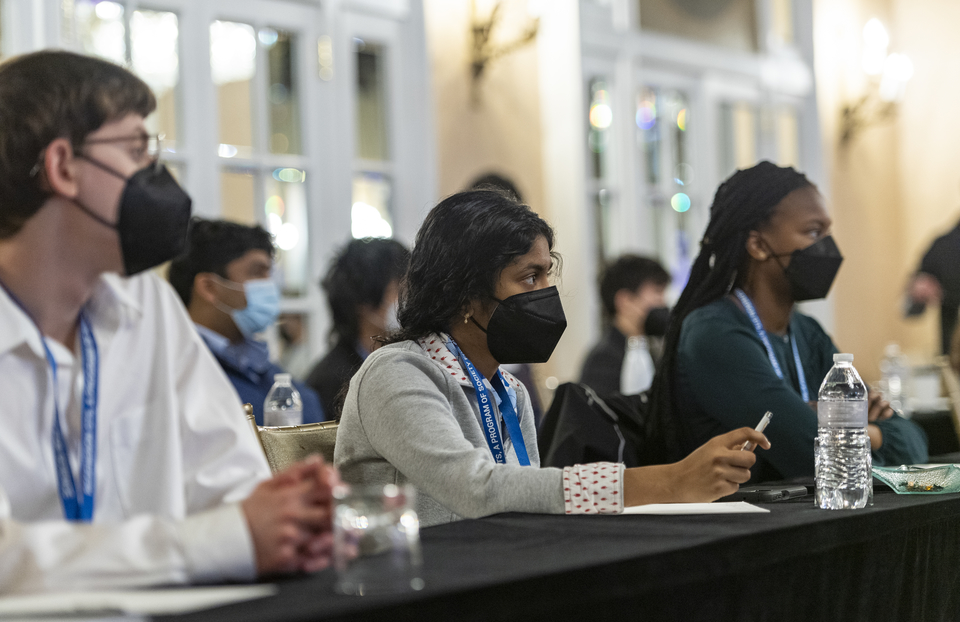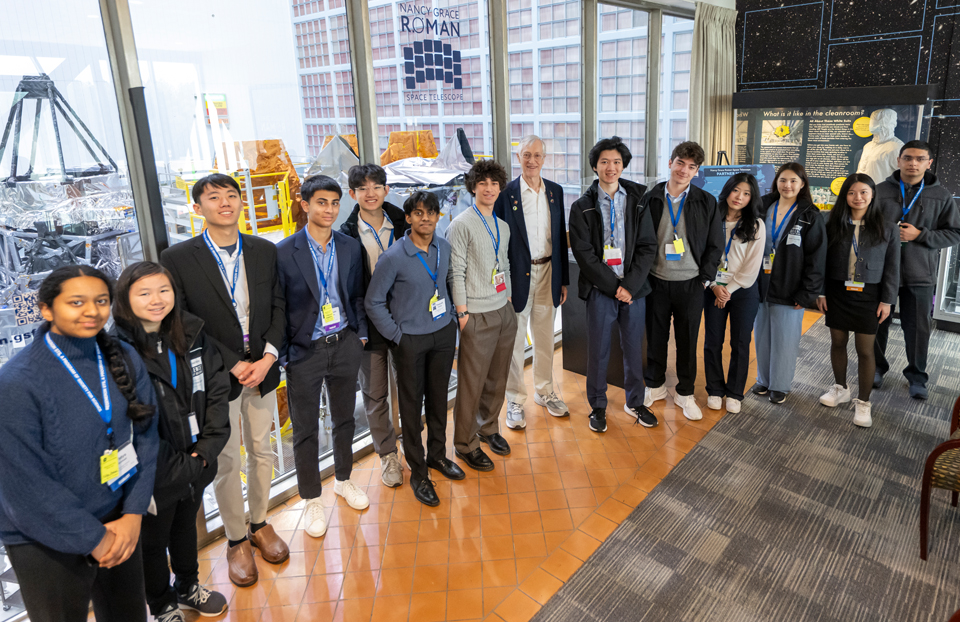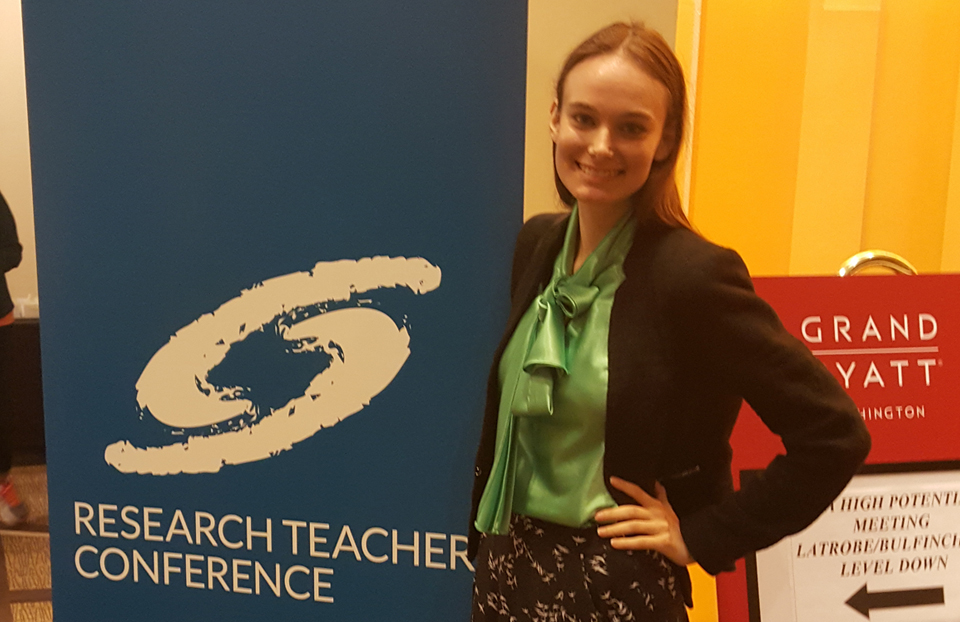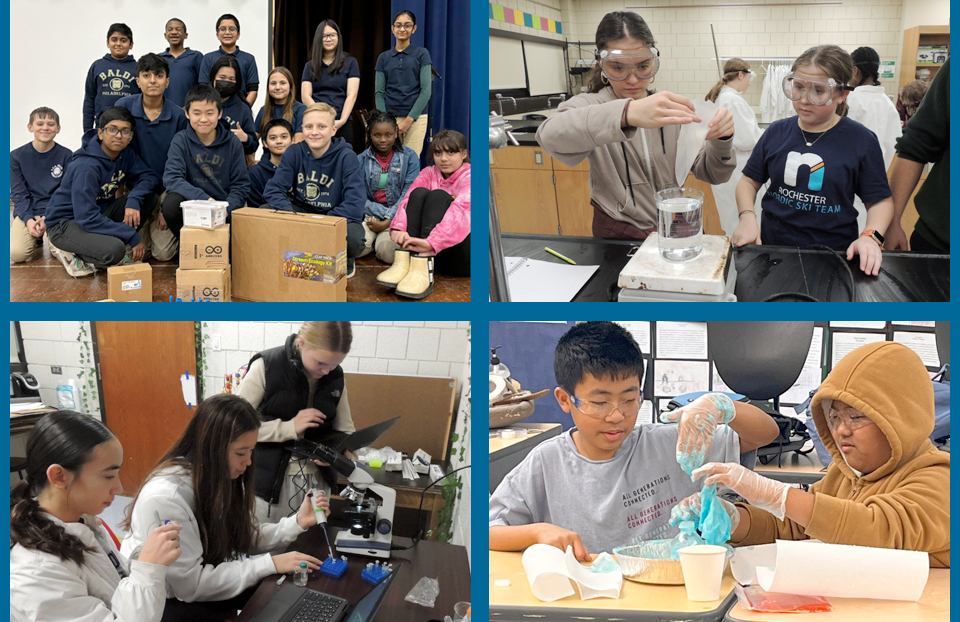Regeneron STS finalists meet with inclusive design experts

The Regeneron Science Talent Search is the nation’s oldest and most prestigious science and math competition for high school seniors. During Finals Week in Washington, D.C., the 2022 finalists did far more than present their projects to the panel of judges. They also participated in social events, networking functions and “Prime Time” chats with leaders in diverse scientific fields.
In one such Prime Time meeting, the finalists met with Carolyn Phillips and Johan Rempel of the Center for Inclusive Design and Innovation (CIDI) at Georgia Tech. CIDI’s mission is to improve the human condition through equal access to technology-based and research-driven information, services and products for individuals with disabilities. Carolyn is the Director and Principal Investigator of Tools for Life, Georgia’s Assistive Technology (AT) Act Program and the Director of Services and Education at CIDI. Johan is a UX/ICT Quality Assurance Manager at CIDI, where he oversees initiatives related to digital accessibility and user experience. Together, they spoke with the finalists about the importance of assistive technology and inclusive design and shared their perspectives on the issues confronting their field today. The discussion centered on the process of developing products and services to better meet the needs of people with disabilities, and the importance of not only designing for, but also with, people with disabilities.
Many of the finalists are developing new products and technologies and were interested in how to apply this inclusive lens to their research in the long term. Carolyn said about her experience with the STS finalists, “It is a true honor to spend time with this dynamic group of young innovators who are actively shaping the future. They give me hope. Investing time and engaging in intentional dialogue about accessibility principles and frameworks has the potential to change the trajectory of design and ensure the world becomes more inclusive for generations to follow.”
Below are some highlights from their conversation.
Question: Has there been one particular change that you’ve found to resolve a major problem with accessibility? And what is an issue you are currently tackling?
Carolyn: One of the biggest issues that we have been facing is that a lot of the materials that folks put out regarding COVID were not accessible. There were people in our country, within the deaf community, for example, who went weeks without knowing what was really going on, because they were not communicated with. And so, people were like, ‘Why is everybody wearing a mask?’ They had no idea that there was even a virus, which is pretty scary when you think about leaving out a whole group of our community.
Johan: From a design standpoint, there’s so much that can be done, but one of the most impactful things is taking into consideration color and color to contrast. So many people are designing with mobile first, so we’re dealing with individuals who access content on a bright sunny day, or in various lighting conditions. It is important to consider incorporating color contrast for more accessible design. And that certainly is a low hanging fruit—easy fixes that the designer can have a major impact on.
Question: You said that there were issues with writing and communicating math in Braille. What, more specifically, are the issues that still need working out?
Johan: Math at the best of times is complex. With complex formulas, there’s an entire math code that’s attached to that. In the context of math equations, if there’s additional information surrounding the equations, there’s a lot more involved with translating into a meaningful way in Braille.
With Braille, it’s a series of dots, with the Braille cell representing six dots. So, you’re translating very, very complex equations into more of a linear modality for someone who is blind, for instance. And then it becomes even more complex when a person is using a device like a refreshable Braille display, where rather than a page of Braille, it has these pins that shoot up to emulate the tactile sensation of Braille, but the majority of those only display one line at a time.
One of the challenges with math is that sometimes you need to get the bigger picture approach. Think of it as looking at a math equation with a tiny little microscope, you can only see one character or part of a character at a time, then you have to go back and remember, “What did I just read?” That’s just sort of touching the tip of the iceberg on some of the challenges with Nemeth Code and math.
Question: It seems evident that if you want to create a product or event that accommodates people with disabilities, there’s going to be some added costs with that. How do you go about convincing people or companies to invest in inclusive design?
Carolyn: The good news is that we have all kinds of formulas that show clearly the cost of retrofitting, and we have the law on our side. We can give you the formula that shows how expensive it is to go back and retrofit. The other piece is—depending on what you’re designing and where it is going to be used—if federal funds, for example, are being used, then it must meet standards, it has to be accessible.
And so convincing and teaching are part of the development process. And honestly, it’s amazing what a lot of the developers that we’ve worked with have said: that it actually saved money designing with people, and for people, with disabilities. It made a much better product in the end.
Johan: That is such an intelligent question. And it’s a question that we really try to emphasize the answers to. Good design for people with disabilities very often translates into good design for everybody.
We thank the Center for Inclusive Design and Innovation, and especially Carolyn and Johan, for meeting with this year’s finalists. To learn more about their work and the principles of inclusive design, you can visit the CIDI website.


